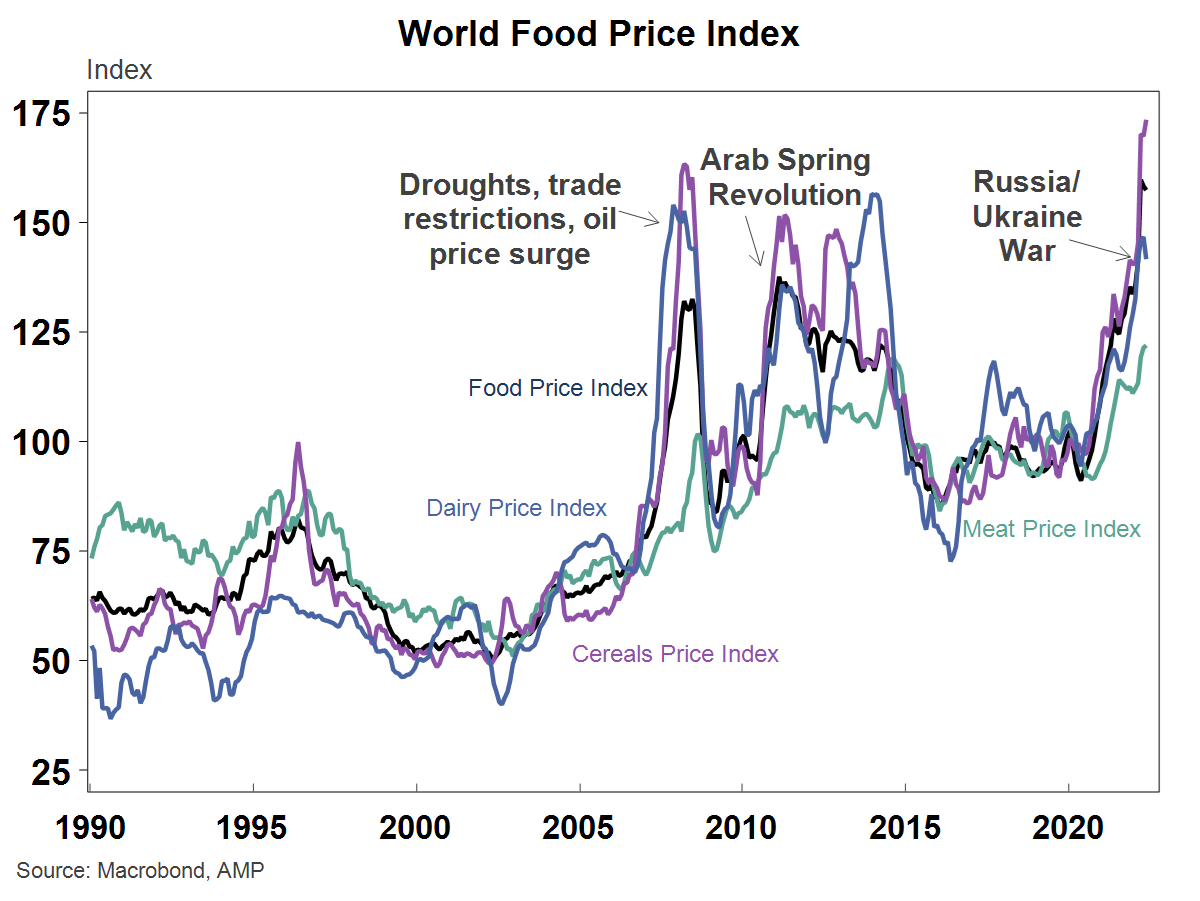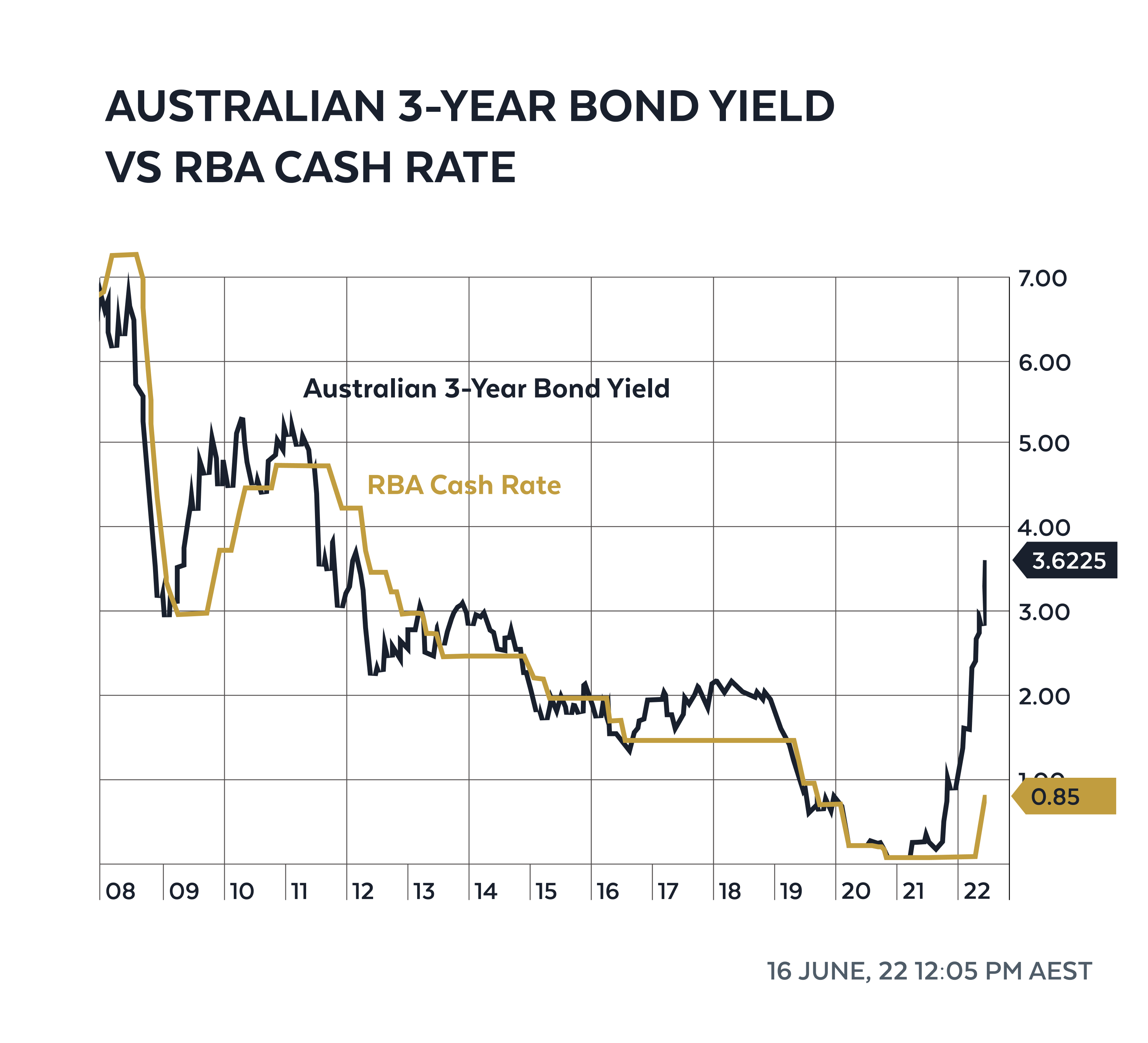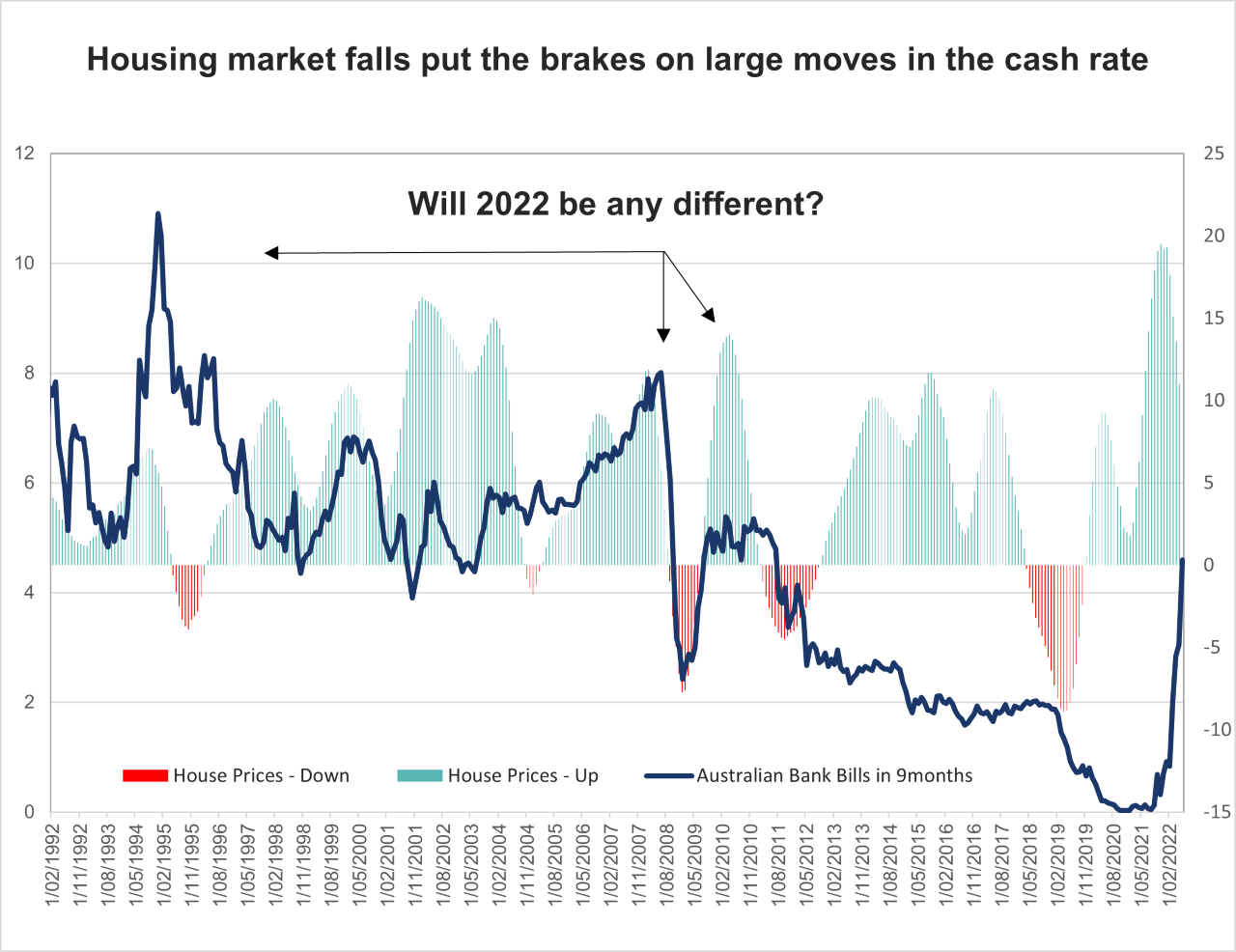Signal or Noise: Three charts investors should be watching right now
In the first episode of Signal or Noise, we discussed the big economic and macro issues that are affecting investment decisions right now. If you missed that chat, you can read or watch the show here:

In part two of this episode, we tasked our panel to share the one chart that they are most interested in right now. It could be a key chart pertaining to one of their top market calls, one that informs a question they have been asking at work, or even just a fascinating correlation that they are putting on their watchlist.
This wire and episode will take a close look at those charts, and more importantly, why they matter to you. Joining series regular Diana Mousina of AMP Capital are Chris Rands of the Yarra Australian Bond Fund and Shawn Hickman of Market Matters.
To see more, you can watch the video or read our special transcript below.
Note: This video was recorded on June 22nd, 2022. Shawn also provided additional colour comments for his chart which are not in the video.
EDITED TRANSCRIPT
Hans Lee: Hello, and welcome to Signal or Noise from Livewire Markets. I'm Hans Lee. Now, if you saw the first part of this episode, we were talking about some of the big macro and economic factors and news of our time, but we're going to switch things up a little bit in this second episode in this particular series. What we're going to do and what we have done is that we've asked each of our experts to bring along one chart that tells them something about the market, something about their calls, something that's informing them or even interesting them in these particular times.
For that, let's introduce our experts. They are Chris Rands of the Yarra Australian Bond Fund, Diana Mousina of AMP Capital, Shawn Hickman of Market Matters. Thank you all for being here.
Diana, I might start with you with this one because your chart is quite interesting. We're going to put it up on the screen for you at home. It's the rise in global food prices. Talk to me about this one, and why it matters to you.

Diana Mousina: I think that this is the key chart or the key indicator that is showing us what's happening to inflation at the moment. We're seeing a huge rise in commodity prices across the board for agricultural commodities, oil, gas, metals, and coal, and that feeds through into every single chain of the production process for goods and for services, mainly for goods, but it creates a lot of problems as well because in a lot of countries that rely very heavily on food as a major share of consumption. When you see such a high rise in food prices, that's when you tend to see some of the biggest problems around the world in terms of riots, and we've already started to see that.
On the chart, you can see that I've put there when there was the Arab Spring Revolution, and there were obviously a lot of implications from that. And the food price index is now at a record-high level, especially for cereals, which are obviously a big input to a lot of poor and emerging markets.
I think that this is a big problem and it's difficult to see when the inflation story around commodity prices will resolve. A lot of it is being driven by what's happening with Russia and Ukraine, but it was already starting to happen before then, and this will be a big driver of inflation over the next few months.
Hans Lee: Shawn, why don't we move to your chart? Your one is an interesting correlation. It's the three-year yield in Australia, the three-year note versus the RBA cash rate. Why'd you pick this one?

Shawn Hickman: I just wanted to point out that we think that bond yields have got ahead of themselves, we think the market's got ahead of themselves, and we think the two will come together. So we don't think that the market's too hawkish and we don't think interest rates will go as high as many fear.
Already one week later, we've seen 3-year bond yields fall over 0.8% back to under 3%, the trouble for equities is it's been caused by increased concerns around an imminent recession which is now weighing on stocks. I believe portfolios should be tweaking back towards yield-sensitive stocks after many months of underperformance BUT the markets are not convinced yet!
Hans Lee: Well, that's interesting. I mean, and if you watch our last episode, we were kind of alluding to this, that a terminal rate of 4% is not really going to cut it because it's going to show in the market, isn't it?
Shawn Hickman: Yep, exactly.
Hans Lee: Perfect. Chris, your chart relates to something that's probably near and dear to everybody's heart, whether they're an investor or not, the housing market. Can you talk us through your one?

Chris Rands: Yeah. So what I tried to show in my chart was in the dark line is the cash rate expectations for the market, so that's bank bills in 90 days. And if you look on the right-hand side of that chart, what you'll see is a huge jag higher, one of the biggest increases in cash rate expectations that we've essentially ever seen.
If you look for periods when that occurred, you really only see 1994, 2008, and 2011. And the thing that really stopped it in its tracks from selling off was the red bars that you see in the background of this chart. So when there's green, that's the housing market appreciating, and when you see red, that's the housing market starting to fall.
And basically, every time those cash rate expectations have dropped, it's because the housing market has started to show signs of cracking.
So I kind of see that similar to what Shawn was talking about, is that these two, the cash rate and the bond rate, will converge once the housing market shows signs of stress.
Hans Lee: Can you quickly talk through kind of the essence of bank bills just in case for anybody who may not be familiar with that particular instrument?
Chris Rands: Yeah, so a bank bill is just a cash instrument, essentially, where you receive a little bit over the cash rate for 30, 60, or 90 days, and so the yield that you're seeing in this chart is the amount of yield you receive for a 30-day bank bill in nine months' time. So this is telling you in nine months' time, you could receive a bank bill of 4%, and that telling you the cash rate is very high at the moment.
Hans Lee: Just on that point, you also, I know, monitor the housing market, Diana, quite closely. A housing recession in Australia?
Diana Mousina: We think prices will fall by 15% in 2023 from their peak levels, which we had earlier this year. That's not a housing recession, but we could certainly get one in pockets. I mean, that's a national story.
In Sydney and Melbourne, we've had the largest run-up in those two capital cities over the last two and a half years. We could very easily get to 20% falls in Sydney and Melbourne.
But we always talk about a national housing market, but there are huge differences in different capital cities and also regions versus non-regions, so we could definitely see a housing recession in some pockets of the market.
Hans Lee: And that is the thing, right? I know we talk about Sydney and Melbourne a lot, but it is just not the same in every capital city. I mean, there are stories about Brisbane rents going through the roof, Perth, I think, was going through, and Adelaide was going through something similar as well. So it's too much of a Sydney-Melbourne-centric story, I think, something like that.
Diana Mousina: Well, the reason that we talk about Sydney, Melbourne, and Brisbane is that 40% of the population in Australia lives in the three capital cities. There are not many people that live in the middle of Australia, in the desert. So that's the reason for that. Regional prices for homes are still going up. They're not going up at the same pace as they were during the peak COVID times, but they're still rising, so it tells you that there are very different areas of activity in the market.
Hans Lee: Let's leave it there. Shawn Hickman of Market Matters, Diana Mousina, AMP Capital, Chris Rands of Yarra Capital Management, thank you all for being here. And thank you all for being here for the first edition of Signal or Noise.
As I say, if you like what we've done and if you want to see more of this kind of content, you can go to the website or to our YouTube channel and you can subscribe there. We'll see you soon.
Enjoying Signal or Noise?
Give this wire a like if you've enjoyed the discussion and hit follow to be notified when new episodes are released.
If you're not an existing Livewire subscriber, you can sign up to get free access to investment ideas and strategies from Australia's leading investors.
3 topics
1 fund mentioned
1 contributor mentioned

